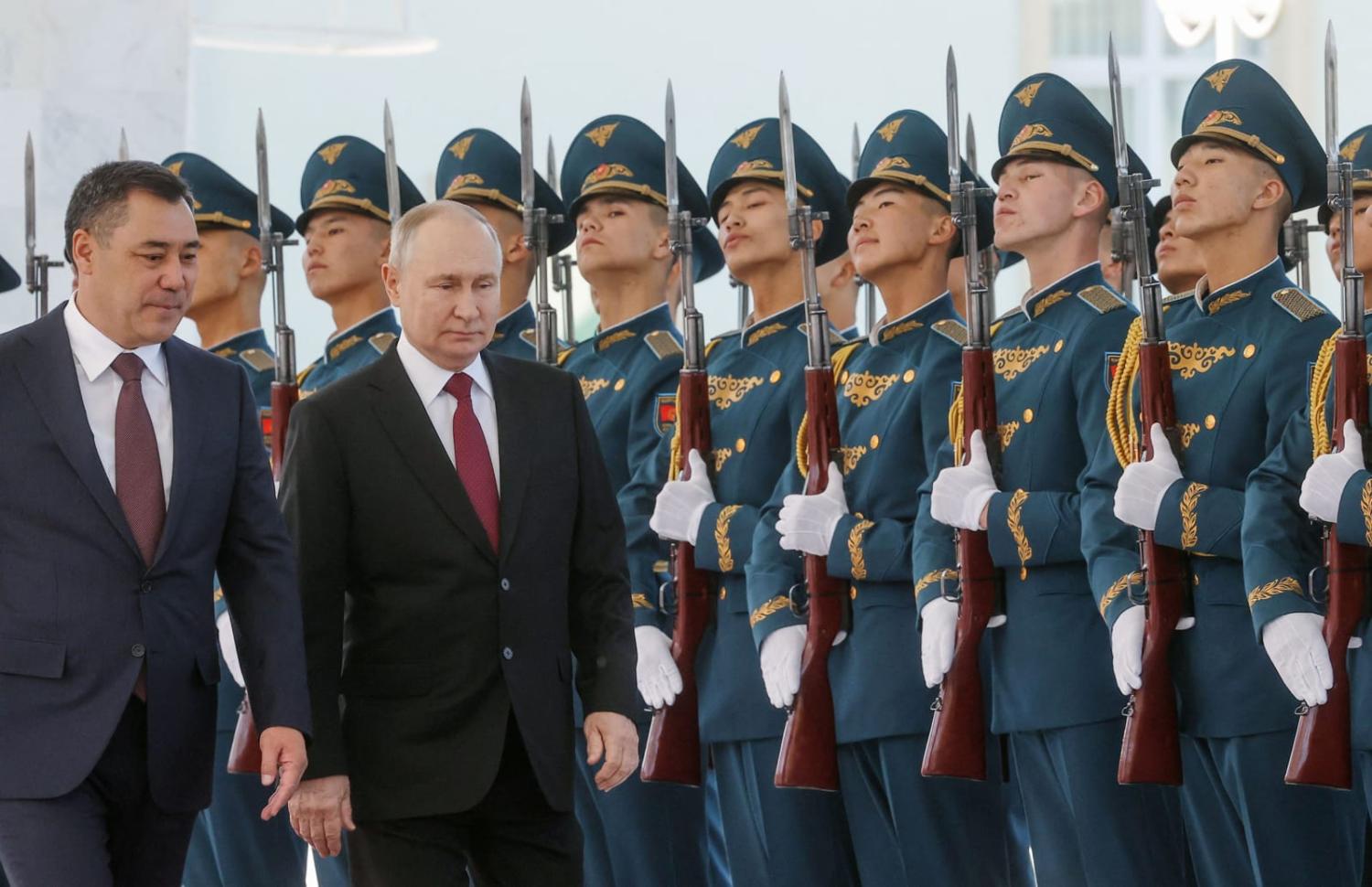Kyrgyzstan’s trade figures defy economic logic, suggesting that a vast amount of its imports are bound for a third country – namely, Russia. Kyrgyzstan’s trans-shipment to Russia of dual-use goods, including ball bearings, vehicle spare parts, and other items, have had direct military implications for the invasion of Ukraine.
Kyrgyzstan has recently announced that it will stop servicing Russia’s Mir payment system. While this step is constructive, Bishkek’s behaviour throughout the conflict has been disappointing. The former Soviet republic of roughly 6 million people trades heavily with Russia, but corruption remains endemic, and elevated exports of potential dual-use goods to Russia persisted throughout 2023 even in the face of repeated warnings from the West. It remains to be seen if Bishkek will follow through on its recently announced measures limiting trade with Russia. Any backsliding from Bishkek could lead to unprecedented consequences for the Kyrgyz financial system and economy, given the West’s commitment to the freedom and sovereignty of Ukraine.
Chinese – and Western – exports to Kyrgyzstan are almost certainly bound for Russia
Chinese exports to Kyrgyzstan have exploded in recent years, rising from $7.5 billion in 2021 to nearly $20 billion in 2023. While other Central Asian countries have also dramatically expanded trade with China, Kyrgyzstan is an outlier in both relative and absolute terms.
According to Chinese trade statistics, Kyrgyzstan’s imports from China rose 168 per cent from 2021 levels, far more than the next closest Central Asian country, Tajikistan, which saw a 120 per cent rise. Kyrgyzstan imports nearly as many Chinese goods as Kazakhstan, even though the latter country’s economy is 20 times larger, at current prices.
Many of Kyrgyzstan’s imports from China have direct or latent military potential and have found their way to the battlefield. A Washington Post investigation in July 2023 found that Kyrgyzstan has served as a critical waypoint for China-to-Russia trade in drones and other dual-use technologies. Kyrgyz officials have declared they are committed to cracking down on the illicit trade, telling the Post the surge in trade was explained in part by improved systems to track the flow of goods. But such a jump in trade in items with dual-use potential coinciding with Russia’s invasion of Ukraine continued through the end of 2023.
One such dual-use technology is ball bearings, which are used for railcars – and tank production. Kyrgyzstan’s 2023 imports of Chinese ball bearings rose 1562 per cent from 2021 levels, and are almost certainly diverted to Russia. There is no apparent legitimate reason for this dramatic surge in imports. The China-Kyrgyzstan-Uzbekistan (CKU) railway is yet to take final investment decision, while Kyrgyzstan does not have sizable auto production. Kyrgyz ball bearings imports from China are almost certainly re-exported to Russia, where they are used to manufacture railcars – and tanks.
Kyrgyzstan nevertheless continued to import – and presumably re-export – significant quantities of ball bearings throughout 2023 even after they were placed on allied sanctions lists.
Bishkek’s violation of the spirit of sanctions has extended to other products. Take its imports of Chinese-made vehicle spare parts, which began surging in November 2021, just ahead of the invasion of Ukraine. While part of this increase in trade can be attributable to a reduction in Russian industrial exports (and China’s surging vehicle-related exports), it is likely that significant amounts of vehicle spare parts have entered Russia via Kyrgyzstan – especially since Russian procurement networks may have used trade to stockpile critical items ahead of the invasion, just as they did for integrated circuits.
Any re-exports of spare parts from Kyrgyzstan to Russia would aid the Kremlin’s war effort, as Russian shortages of vehicles and equipment are constraining its military. Russia has likely acquired vast amounts of critical vehicle spare parts for its invasion forces in Ukraine via Kyrgyzstan.
Kyrgyzstan’s role as a cut out for China-to-Russia trade has also provided indirect economic and political assistance to the Kremlin. For instance, vehicle imports restrain inflation and interest rates while enabling Russian consumers to access the newest car models. Kyrgyzstan’s re-exports of vehicles to Russia limits economic pain, reducing the probability of an elite and popular backlash to Putin.
Kyrgyzstan’s re-exports of vehicles are almost certainly enabling Russian consumers to access the latest Chinese-made electric vehicles. According to Chinese trade statistics, Kyrgyzstan is spending approximately 5 per cent of GDP on imports of plug-in hybrid vehicles (PHEV) and an additional 4 per cent of GDP on battery electric vehicles (BEV). Even allowing that global production of EVs has rapidly expanded in recent years, meaning trade has lifted from a low base, Kyrgyzstan is a country that only has 30 listed charging stations for BEVs, struggles to provide electricity during winter, and recently declared a three-year energy emergency.
With Kyrgyzstan’s purported imports often failing to correspond to its economic realities, it is a near certainty that a large volume of goods notionally shipped to Kyrgyzstan are ultimately bound for Russia.
What is to be done?
Countering China’s direct and indirect trade with Russia is a difficult and knotty problem for Western policymakers. Still, the West is not without options. Kyrgyzstan’s looming debt repayments to China could provide opportunities for Western policymakers to weaken Bishkek’s role in facilitating China-to-Russia trade. Sticks could prove necessary, however.
Trade with Kyrgyzstan is a rounding error for the West and – perhaps most importantly – much more stringent sanctions can be imposed quickly, without legislative approval. If Kyrgyzstan continues to serve as a conduit for militarily-relevant trade from China-to-Russia, facilitating the Kremlin’s illegal and outrageous invasion of Ukraine, its financial sector and economy may face severe sanctions and unprecedented pressures.
Joseph Webster is a senior fellow at the Atlantic Council and editor of the independent China-Russia Report. This article reflects his personal opinion.

